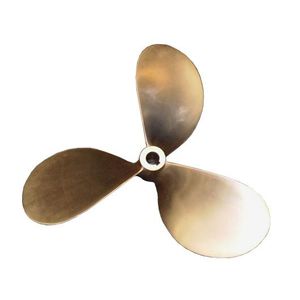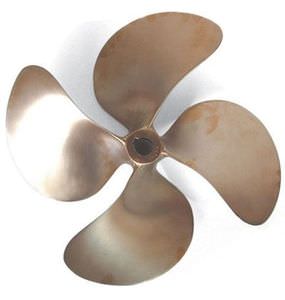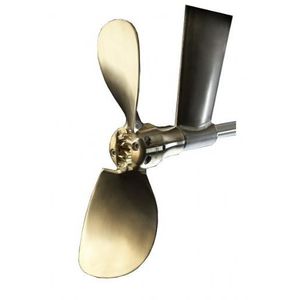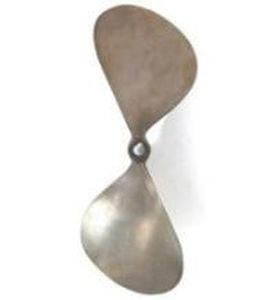
- Equipment
- Propulsion, Engine controls
- Boat propeller
- SCAM-Marine d.o.o.
Boat propeller O propelerimafixed-pitchshaft drive3-blade
Add to favorites
Compare this product
Characteristics
- Application domain
- for boat
- Technology
- fixed-pitch
- Propulsion
- shaft drive
- Number of blades
- 3-blade, 4-blade
Description
Propeller or “screw” is the most common type of propulsion on ships.
The propeller's construction is relatively simple, its durability exceeds the ship's durability, maintenance costs are very small, the price is relatively low, and efficiency relatively high. For all these reasons the largest number of vessels uses propeller for propulsion.
Propeller consists of conical hub and blades which are placed vertically or slanted on the hub. There is a conical hole in the hub for the propeller shaft. Blades and hub are cast as single piece. It is made of bronze, specifically manganese or nickel-aluminium bronze.
It can have two to six blades, and three or four blades are the most common. Most vessels have one propeller, but there are those that use two, or rather rarely three or four propellers. Besides classic type propellers, there are also nozzle propellers, variable pitch propellers, folding propellers, counter-rotating propellers (DUO-PROP) etc.
There are various theories of propeller action and the oldest and the simplest theory is the one with the principle of screw with threads that slides into a nut and has speed equal to the number of revolutions multiplied by the pitch. However, due to the water viscosity the propeller (vessel) speed is smaller than the number of revolutions multiplied by the pitch. Here we can talk about “the slip” which is a ratio of the actual and theoretical speed of the propeller (vessel).
Info
We offer propellers of the reputable Japanese manufacturer MIKADO, American company MICHIGAN and Italian company ELICHE RADICE. The offer includes propellers of various diameters, pitches and for various shaft diameters.
Catalogs
No catalogs are available for this product.
See all of SCAM-Marine d.o.o.‘s catalogsRelated Searches
- Power boat steering wheel
- Propeller
- Fixed-pitch propeller
- Boat propeller
- Propeller shaft propeller
- 4-blade propeller
- 3-blade propeller
- Stainless steel power boat steering wheel
- Coupling
- Bronze propeller
- Shaft mechanical coupling
- Boat steering
- Wooden power boat steering wheel
- Boat coupling
- Folding propeller
- Propulsion system
- Boat cylinder
- Traditional power boat steering wheel
- Flexible mechanical coupling
- Hydraulic steering gear system
*Prices are pre-tax. They exclude delivery charges and customs duties and do not include additional charges for installation or activation options. Prices are indicative only and may vary by country, with changes to the cost of raw materials and exchange rates.








